The Berkshires Bowling Alley that Inspired "The Big Lebowski"
It’s been 36 years since the release of The Big Lebowski, the irreverent cult comedy by Joel and Ethan


You might assume that the cul-de-sac is an invention of post-World War II suburban sprawl, but the neighborhoods of Brooklyn’s Flatbush include several of these charming courts. It’s a reminder that decades before the war, Flatbush was a destination for families looking to move beyond the City’s urban core.
Although Flatbush was founded as a village during colonial times and has some of New York City’s oldest buildings, much of the area that once formed the Town of Flatbush remained relatively rural or undeveloped throughout the nineteenth century while Manhattan and other parts of Kings County urbanized.
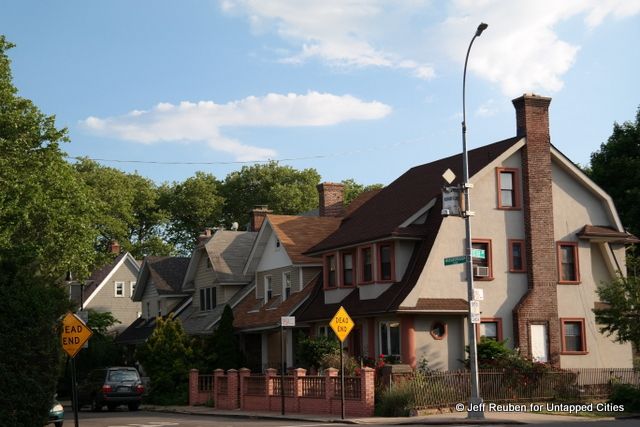
In the early twentieth century, Flatbush experienced a residential real estate boom as the expansion of the subway system into the area made it attractive to middle and upper income New Yorkers looking to move away from areas crowded with industry, traffic, and other urban conditions. While most of the new residential development occurred along the streets of Brooklyn’s grid system, some of Flatbush‘s real estate developers also built housing around private dead-end streets.
This is not to suggest that cul-de-sacs originated in Brooklyn during the early decades of the twentieth century. Horace Court and Temple Court are cul-de-sacs in the Windsor Terrace section of Brooklyn dating from the nineteenth century and earlier examples of housing built around courts can be found elsewhere. But, Flatbush’s cul-de-sacs are evidence of its role as a bedroom community and of the enduring appeal to some of a private, quiet street with no outlet.
Here are six examples of Flatubush’s cul-de-sacs which continue to provide a home and a community for their residents.
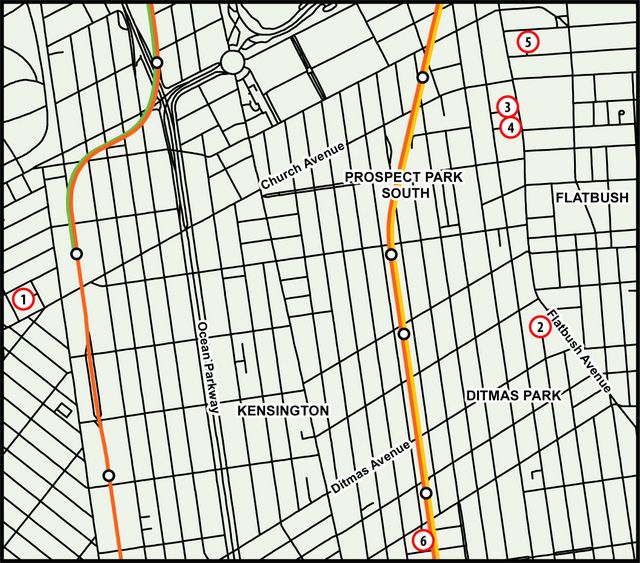
Locations of the 6 cul-de-sacs featured in this article. Map by Michael Curley
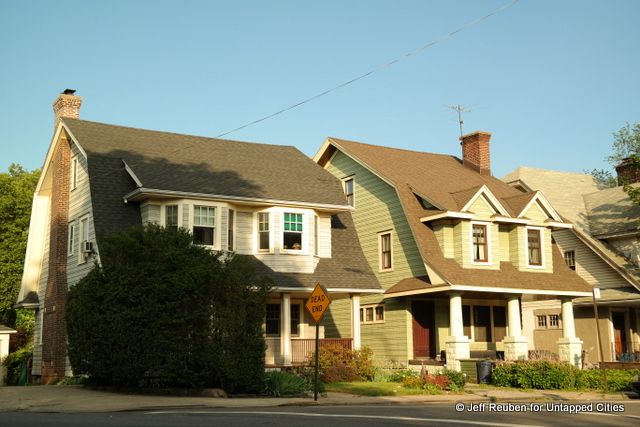
Marlborough Court, located in the Ditmas Park section of Flatbush, is a cul-de-sac lined by nine single family, detached houses built in 1913.
The developer touted the houses of Marlborough Court as a bungalow colony on a private street with modern conveniences and close proximity to the Newkirk Plaza subway station.
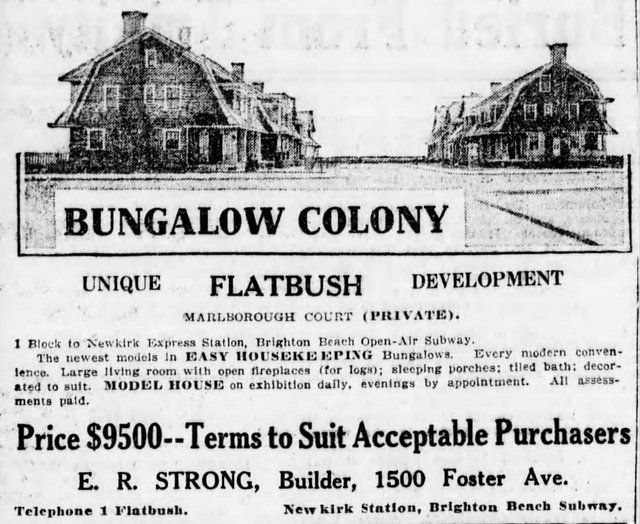
The Brooklyn Daily Eagle, 21 September 1913, accessed via Brooklyn Newsstand/Brooklyn Public Library
Over a century later, the Marlborogh Court bungalows retain a decidedly suburban character with their gardens, porches, chimneys, and sloped roofs.
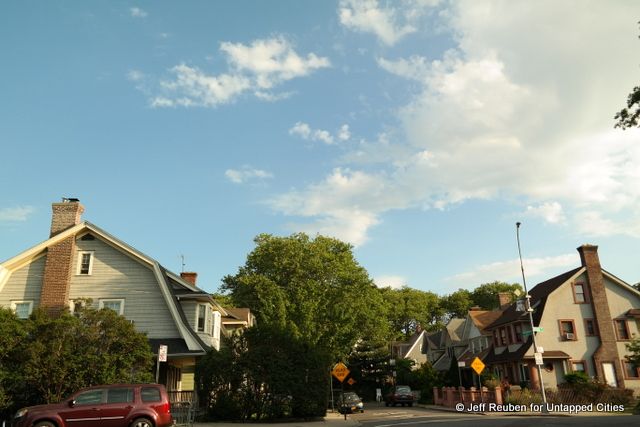
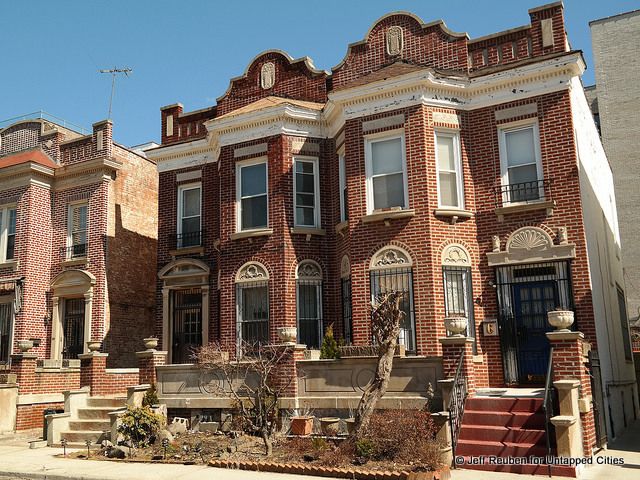
Built in 1916 on the site of a former estate located mid-block along Martense Street between two major thoroughfares, Flatbush and Bedfod Avenues, Martense Court has seven single-family rowhouses on each side. Although the houses and lots are not as large as the Marlborough Court bungalows, the exclusive character of this cul-de-sac is reinforced by the houses’ distinctive architecture. They are built in a Colonial Revival style that was (and remains) uncommon in this area of Flatbush and New York City generally.
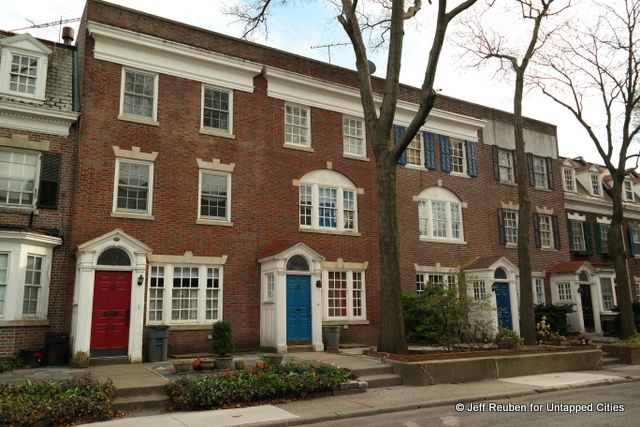
Around the same time that Martense Court was built, another cul-de-sac development of single family homes on a former estate was being developed a few blocks to the south. A total of 23 neo-Federal style single-family rowhouses were built along Albemarle Terrace during 1916-1917.
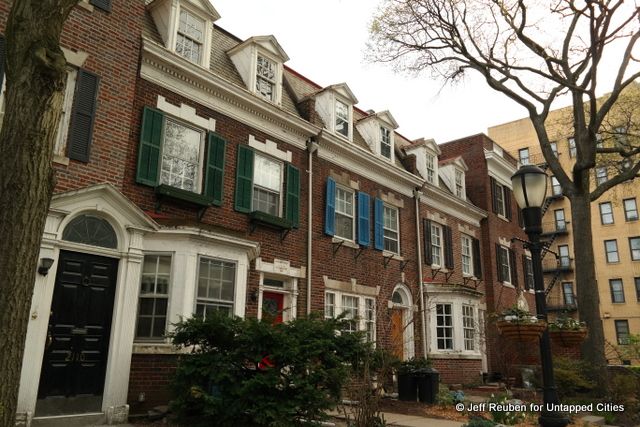
Advertisements for Albemarle Terrace promised easier upkeep than bungalow houses, such as Marlborough Court, due to the houses’ sturdy brick construction.
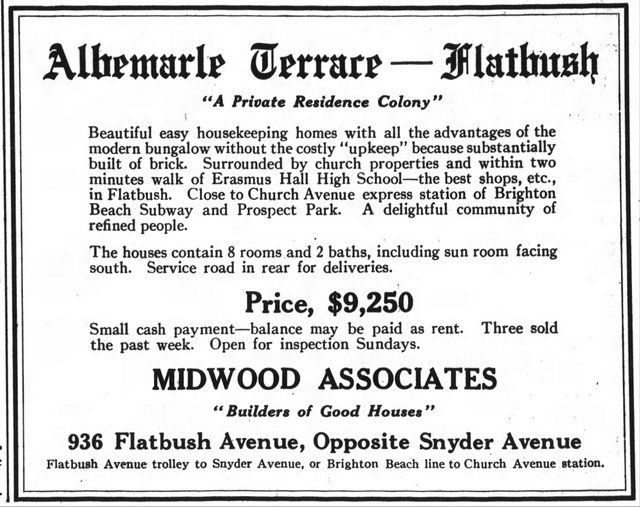
Brooklyn Life (magazine), 31 March 1917, accessed via Brooklyn Newsstand/Brooklyn Public Library
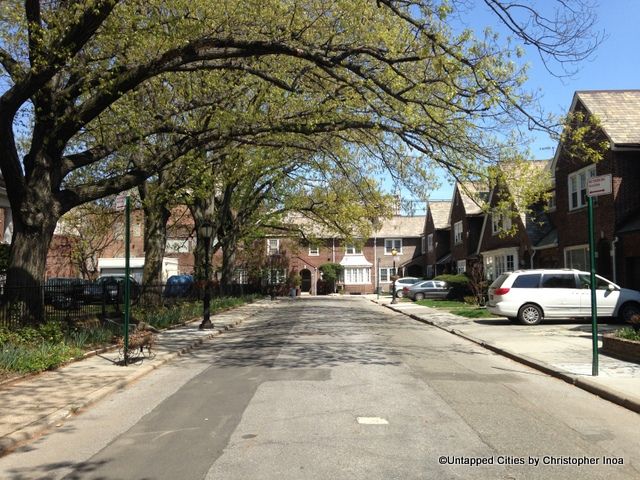
Following the development of Albemarle Terrace, the same development and architecture team built a second cul-de-sac, Kenmore Terrace, immediately to the north (both streets extend from East 21st Street which was previously known as Kenmore Place).
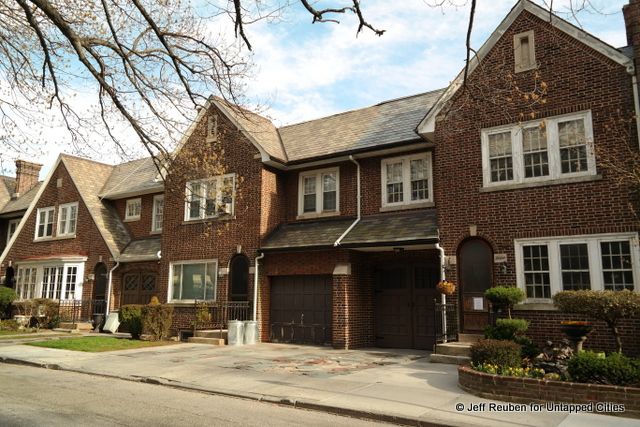
Nine houses were constructed along the south side of Kenmore Place during 1918-1920 and, unlike the Albemarle Terrace houses, most of these were built with short driveways and garages, reflecting the growing importance of automobiles for middle class homeowners.
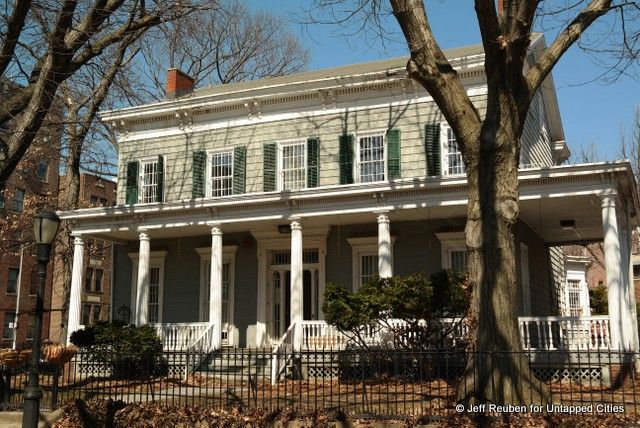
On the north side of Kenmore Terrace lies the former parsonage building of the Flatbush Dutch Reform Church. The parsonage, built in 1853 and originally located on Flatbush Avenue, was moved to this location in 1920 and is still used for church functions. Kenmore Terrace has a distinctively pastoral setting.
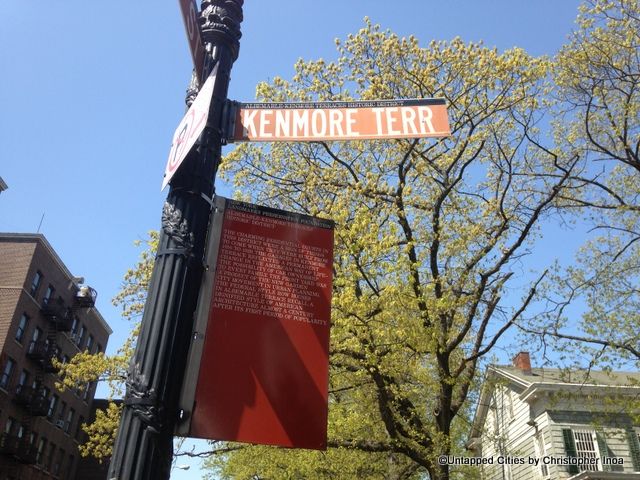
Albemarle and Kenmore Terraces form a New York City historic district, which is also listed on the State and National Register of Historic Places. For more information see Untapped Cities article on the historic district. (The parsonage is also a designated New York City Landmark and State and National Register-listed.)
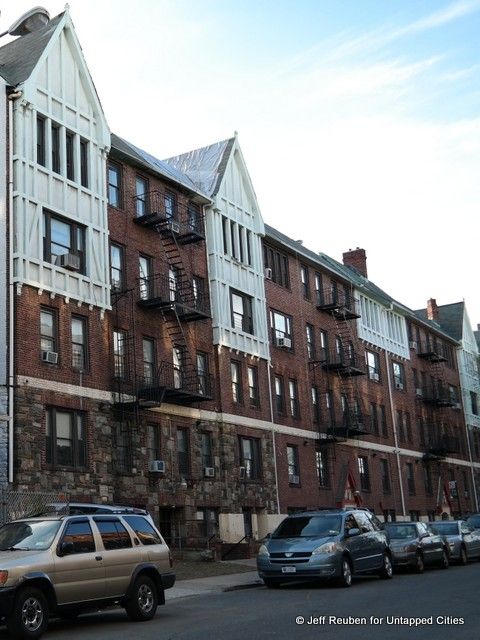
Norwayne Court consists of nine Tudor-style apartment buildings developed in the 1920s around a cul-de-sac extension of East 22nd Street, located north of Ditmas Avenue. The buildings are 4 and 5 stories tall, with a total of over 160 apartments, and as such it may not seem to have much in common with post-war suburban cul-de-sacs comprised of single-family houses.
However, Norwayne Court was designed and marketed as being child-friendly, one of the hallmarks of suburban cul-de-sac living.
A Brooklyn Daily Eagle article reported that “children will be welcomed, for the builders are setting out to do a thing unique in Brooklyn putting an apartment group in which the interests of the children will be the first consideration.”
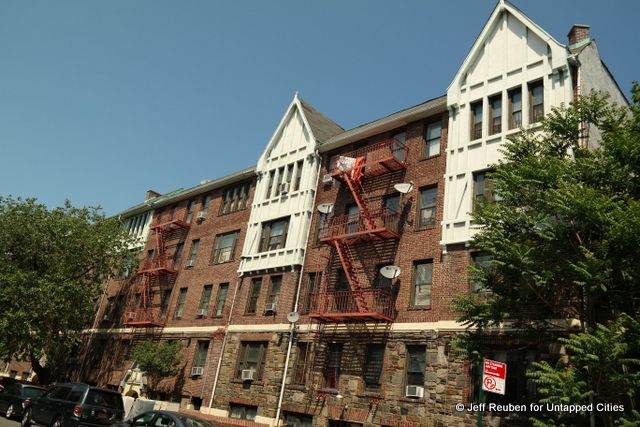
The cul-de-sac roadway was touted as being good for kids, similar to later suburban examples.
“Because the court is situated on a private dead-end street it has a minimum of vehicular traffic, it is quiet and attractive to tenants with small children… …in a word, it combines the advantages of suburban life with all the conveniences of city living in a remarkable degree.” Brooklyn Standard Union on Norwayne Court, 7 September 1929
Besides being child-friendly, Norwayne Court apparently also did great work on getting positive press coverage, which any real estate professional, urban or suburban, would envy.
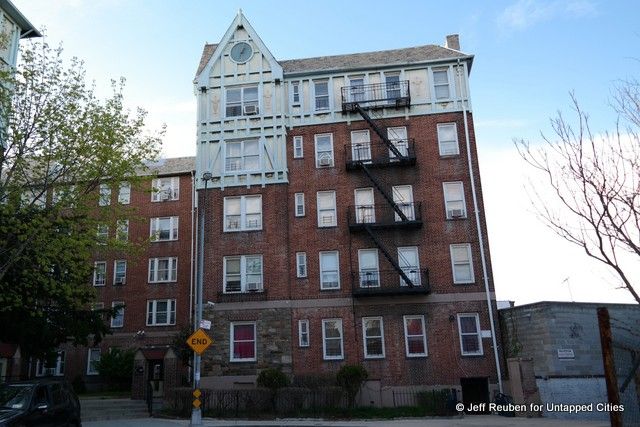
According to the (New York) Sun, Saturday, 17 January 1925: Norwayne Court’s “architectural idea was suggested by an old English print of a street in England in the sixteenth century.”
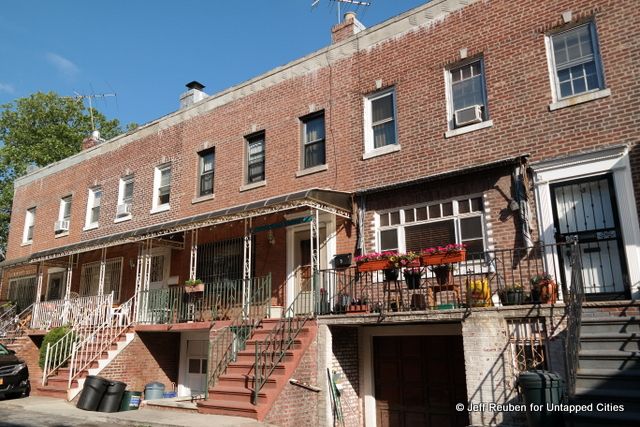
Unlike the other cul-de-sacs in this list, which emphasized design and amenities, Story Court in West Flatbush was developed in 1936 in the midst of the Great Depression and according to news reports it was aimed at the “purchaser in the low-priced field.”
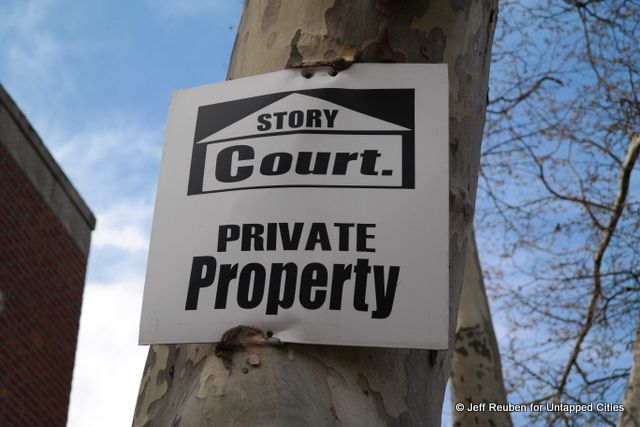
Story Court consists of ten, relatively unadorned rowhouses lining a narrow court. It is the only cul-de-sac on this list that remains private, as it is owned by the adjoining properties and is not a mapped City street. Its private status is attested to by a sign posted at its outlet to Story Street.
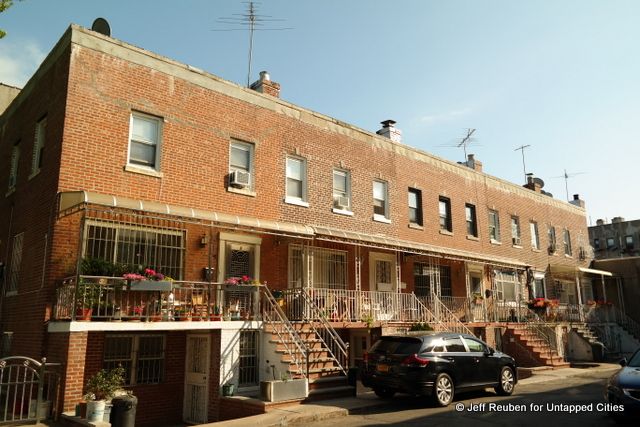
As the diagram below illustrates, by creating a cul-de-sac, the developer was able to build ten 20-foot wide houses on a rectangular property that had 120 of street frontage and was 100 feet deep. A conventional design, with the houses facing the main street, would have yielded only six 20-foot wide houses. The cul-de-sac was not only attractive to the resident, but was a cost-effective solution for the developer’s bottom line. Profitable development never goes out of style.
Next, check out 9 remaining mews from NYC’s horse drawn past. Read more about New York City’s street origins in our History of Streets column.
Subscribe to our newsletter